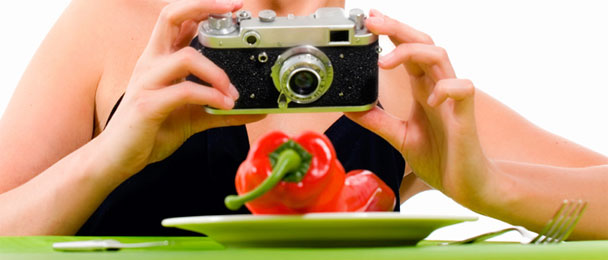In a recent psychological study, published in the journal Science on December 10, 2010, Carey Morewedge, Young Eun Huh and Joachim Vosgerau reported that mental imagery alone, depending on how it is directed, can serve to reduce consumption rather than increase it. This is not a correlation that would be obvious, given the proliferation of food imagery in the form of food publications (including the one you're reading now), cooking shows, food-related advertising and the simultaneous proliferation of inches in the average American waistline. But under the right circumstances, simply looking at images of food—engaging the visual senses and the all-important imagination, without actually tasting anything—can make you want to eat less.
This may be hard to swallow—so to speak—if you happen to be visualizing the poached halibut with braised artichoke chestnuts and bacon from Le Bernardin, or in a more indulgent mode, Paula Deen's chocolate gooey butter cookies. And a visit to Google images for both may seem to confirm that both are in fact more desirable, and actually, you'd be happy to eat either or both right this very minute.
But it's a little more complicated than that: As Yale neurobiologist Gordon Shepherd notes, smell, appearance, texture, memory and mental expectations all shape the way we crave and enjoy food. Advertisers and restaurants understand this intuitively and work hard to trigger desire and manipulate our expectations, using color, packaging and branding. In kitchen reality competitions on TV, magazines, and websites and increasingly on social networks like Facebook, the media whets our appetite with an explosion of food imagery that's hard to miss and hard to resist.
Often, the colors in food and food packaging have been fine-tuned to evoke emotions like joy and comfort, or to add an identity element—a sense of sophistication—to our set of perceptions in a way that goes far beyond taste and smell. Thus the increasing appearance of visually striking and intricate plating techniques at modern restaurants, even at venues that wouldn't necessarily be considered fine dining establishments.
And while food has always been one of the most basic social experiences, digital media and mobile phones have added new ways to share thoughts and images of food, injecting a social dimension into the expectations we bring to the table.
This rising tide of food images is often a dieter's bitter complaint, and leads one to wonder how much the media is to blame for America's crushing, irrational obesity epidemic. And it's not a problem of awareness, or lack thereof. Even in the face of huge national problems ranging from terrorism to joblessness, many of America's leading influencers—Michelle Obama, Michael Bloomberg, Oprah Winfrey and much of the “responsible” media—have championed the subject.
But while newspapers, magazines and TV networks do their part to highlight the problem, they're not exactly reducing temptation. Food books and magazines have always been popular, but recent years have seen a proliferation of books and shows from “personal brand” food divas like Nigella Lawson, Rachael Ray, and “Barefoot Contessa” Ina Garten, while rabid followings have amassed for cooking competition shows like “Iron Chef” and “Hell's Kitchen.” And that doesn't even touch the indulgent world of stunt food (e.g., pie milkshake, 1,800-calorie cake slices).
It's easy to stereotype obesity as an affliction of the poor, since low-end junk food is so aggressively marketed. But the affluent diner has lately been tempted by a barrage of comfort-food fads (fried chicken, barbecue, noodles, poutine, bone marrow, truffle fries, pork bellies and red velvet cupcakes) screaming out from newsstands and Sunday food sections, and on restaurant review forums like Yelp.
“Cases of gout, the overindulgence disease, are on the rise. Come on, America,” lamented New York magazine from the “Lowbrow-Despicable” corner of its weekly rush-to-judgment end feature “The Approval Matrix” on January 17, 2011. But the lush, red-centered bulging burger that illustrated that complaint would have made a fine alternative to the equally juicy Juliet cut steak from Má Pêche that tantalized hungry readers from the cover of the magazine's “Where to Eat” issue two weeks earlier.
But is there really a cause and effect? Are all these food images we're subjected to making us fat? Or is it possible that by looking at food, we might actually satiate ourselves with the visual experience alone? The CMU psychologists led by Morewedge found that if pictures of food can be made to trigger the mental imagery of consumption, looking at more can make you eat less.
The Morewedge team attempted to distinguish between two effects of looking at an image. Normally, seeing an enticing picture such as a juicy burger serves to “sensitize” (i.e., increase appetite). However, “habituation” (the result of repeated exposure) can decrease desire. To test whether repeatedly imagining eating food would reduce desire, a group of subjects were asked to imagine that they were inserting thirty quarters in a washing machine and then imagine eating three M&Ms, or to imagine inserting three quarters into the machine and then imagine eating thirty M&Ms. (The researchers used the quarter-in-the-machine mental image to resemble the motion of putting an M&M in the mouth.)



 Pinterest
Pinterest


